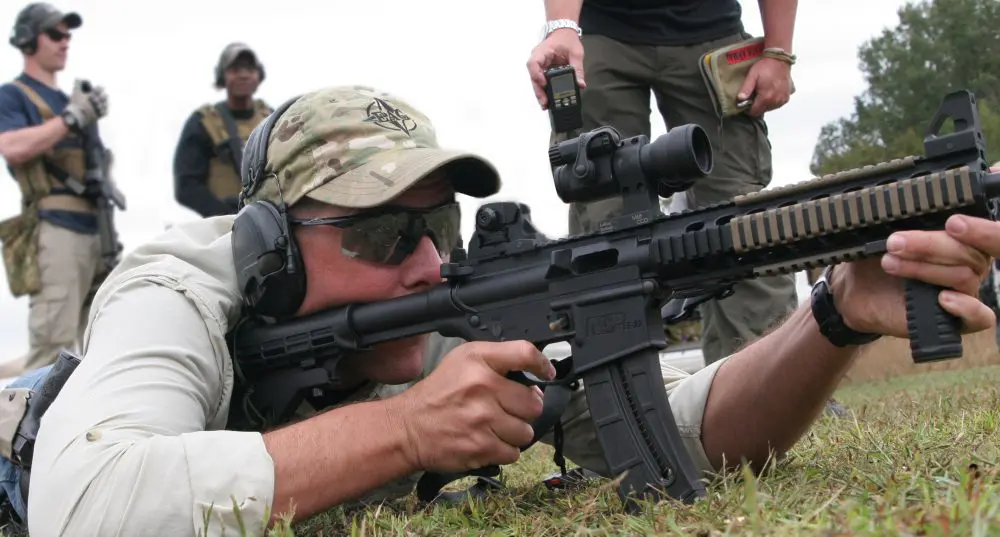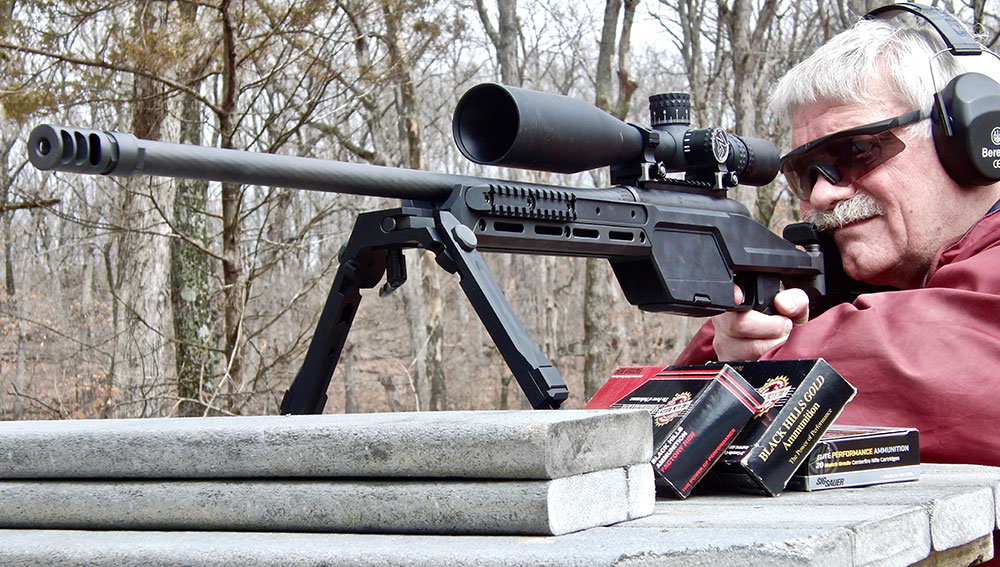Many people are already familiar with the legend of Death Under The Desert Sun.
The incident occurred several years ago in Arizona, and, like many legends, has grown in size with each recounting of the tale—thanks in part to the self-aggrandizing anecdotes of the hero and chief raconteur of the incident.
For the three remaining people on the planet who haven’t heard the heroic exploits of Saint Patrick, here’s what transpired:
At the time of the occurrence, yours truly and my life-saving benefactor were engaged in rolling a group of trainees through a shoot-and-move outdoor course of fire. The scenario involved the process of shooting and maneuvering laterally from one designated position of cover/concealment to the next, in a line of seven sequential shooting stations.
Summer in northern Arizona is rattlesnake season, so I volunteered to be the designated “snake-checker” prior to the initiation of the range exercise, in the interests of clientele safety. And as luck would have it, I came upon a Mojave rattler coiled in the bole of a tree, which was the last shooting position of cover. At that stage of my life, I’d given up indiscriminately killing any of God’s creatures, be they two-legged, four-legged or serpentine, but I radioed Saint Patrick, and informed him that I was about to fire “a couple of .45 rounds” to kill the snake, for shooter safety reasons.
Proned out six feet from the tree to maintain a safe backstop, I fired a couple of half-inch bullets into the coiled carcass. So much for Plan A—he wasn’t interested. So I fired another round—then another, and another, and another. All that my repeated firing apparently achieved was to enrage the Herpetological Creature From Hell. After eight rounds, I began to wonder if my 13-round magazine was about to be depleted. (Snakes are very resilient and often don’t die quickly from body wounds: that’s where the old saying, “cut the head off the snake” came from.)
Intrigued by the sounds of my Alamo-like performance from 50 meters away, and obviously concerned that my normal irascible demeanor had gone full throttle, or that I’d been attacked by a herd of marauding butterflies, Saint Patrick wandered over to help. After pondering the situation amidst peals of hysterical laughter, Saint Patrick drew his trusty MEU-SOC pistol—and of course, his royal Serpentiness then decided—for the first time—to allow his ugly head to protrude from the orifice in the tree trunk.
Saint Patrick swears blind that the snake’s tongue was flickering and that he was about to attack me. Personally, I think he was sticking his tongue out and blowing me a disdainful raspberry. In any event, my hero drove in a single round underneath the worm’s chin, and the latter proceeded to shuffle off his various mortal coils. And that was the end of a just-wouldn’t-quit four-foot Mojave rattlesnake, riddled with nine entrance wounds and 14 exits. Though needless to say, in the repeated telling of the tale over the past couple of years—I won’t say by whom—I keep receiving second-hand reports of a 50-foot serpent, six feet in girth, which had me by the throat with both hands and was strangling me to death. Rescued, naturally, by—as if you hadn’t guessed that much.
So much for the legend of Death Under The Desert Sun.
Now for the moral of the story.
Like the rattler, some human adversaries just won’t go down, no matter how many rounds you pump into them, no matter what caliber. Over 30 years ago Colonel Jeff Cooper, to cement the reality of this fact, printed up a pamphlet entitled I Hit Him, But He Didn’t Go Down—in 30 languages. There is no such thing as a guaranteed one-shot stop—or two, or three, for that matter—unless you penetrate the medulla oblongata. And that is an extremely difficult shot to make on demand, since the organ is small, is ensconced at the rear base of the skull, and is accessible from the front usually only through a wide-open mouth. Any other headshot may or may not immediately incapacitate your adversary—even a bullet in the frontal lobes.
So Moral Number One is to stand by for immediate follow-up rounds, irrespective of where you’ve tagged him. And like the Snake Patrick’s Day debacle, where I had no head shot available, one may not have an “effective” part of a human body or head available at any given time in a firefight. Is a gut shot effective? Probably not, even though a central side-on lower torso shot has extremely high possibilities, especially if you puncture the kidneys, spleen or adrenal gland.
The problem is that, even though you may be using the best terminal ballistic-delivering equipment in the business, your enemy either doesn’t know this or simply doesn’t care. He’s driven and/or he’s crazy—and he feels no fear. The reason he doesn’t feel fear is that he’s a psychopath at that given moment—and psychopaths have an amygdala which has 20 percent less capacity than God-fearing, logic-applying prey. (The amygdala is the section of the brain which hits the “panic button” under attack, and is always the primary receptor when under attack. Then—and only then—do the frontal lobes process information to the cerebellum, which dictates a physical plan of action to the limbs.)
Ergo, your opponent is either supercharged on chemicals—man-made or God-given—or he literally doesn’t have the capacity to panic as much as a sane intended victim, or both.
Yes, upper torso shots are probably more effective than gut or pelvis shots when delivered frontally, but in a fast-changing violent confrontation, beggars can’t be choosers. If you have the time, go for the potentially most effective target area. If you don’t, get whatever meat and bone you can get, and maintain continuity of fire until the deadly force threat is gone.
Why don’t experienced combatants execute Mozambique or Automatic Failure Drills in battle? Because most of the time your human target doesn’t offer that luxury in battle, that’s why.
Fifty foot long, six feet in girth, and strangling me to death. Thanks Pat, I owe you one—I think.
[Louis Awerbuck is Director of the internationally acclaimed Yavapai Firearms Academy. Course information and schedules are available at their website at www.yfainc.com]






